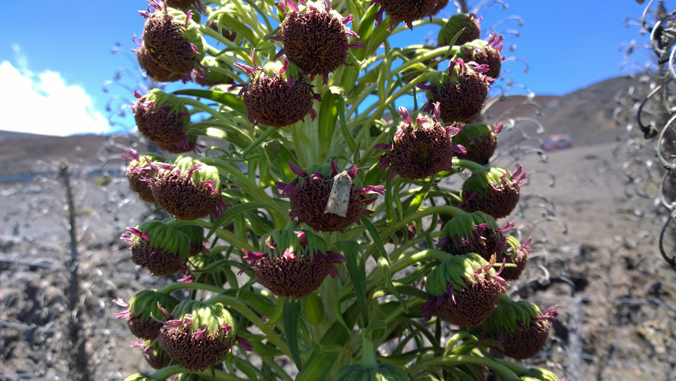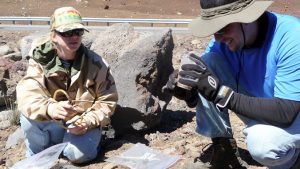
Two moth species unique to Hawaiʻi Island have been officially named and described thanks to the long-term collaborative efforts of scientists from the University of Hawaiʻi at Hilo, UH Mānoa and the University of Nevada, Las Vegas (UNLV).
The moth species, which belong to the family Noctuidae, were given the names A. helela and A. kuamauna to honor their Hawaiian heritage. The moths are unusual in both behavior and habitat—they are day-flying rather than nocturnal and found on Maunakea at elevations of 9,000 feet and higher.

Matt Medeiros, an evolutionary biologist at UNLV, is the lead author and principal expert in identifying and describing the morphology of the insects. Jessica Kirkpatrick, a graduate of the UH Hilo Tropical Conservation Biology and Environmental Science program, and Jesse Eiben, an entomologist at UH Hilo, along with UH Mānoa scientists Christine Elliott, Andersonn Prestes and Dan Rubinoff, are co-authors of the paper.
“It was a group effort, and we were able to build on the work of previous researchers going back to the 1980s, including entomologists, Hawaiʻi state land managers and people at the Bishop Museum,” said Eiben.
Details of the study were published in the journal Zootaxa, a publication for animal taxonomists. The study, “Two new day-flying species of Agrotis Ochsenheimer (Lepidoptera: Noctuidae) from the alpine summit of the Maunakea Volcano,” is available online.
The names assigned to the moth species were decided after careful deliberation. The research team conferred with a Hawaiian cultural advisory group on Hawaiʻi Island and worked to ensure that the names would reflect a sense of place, language, culture and science.
Entomologists were aware of the two moth species since the early 1980s, referring to them unofficially as “Maunakea flying moths.” However, there was no single scientist able to describe the species in a complete way alongside other Hawaiian moths of the same genus.
“There are not enough specialists and taxonomists in Hawaiʻi,” said Eiben. “Also, you really need a team to describe the species and how it’s connected to the high elevation ecosystem’s arthropod biodiversity baseline. There are just too many species for one entomologist to do it alone.”
For the full story and more pictures see UH Hilo Stories.
–Written by Leah Sherwood, a graduate student in the tropical conservation biology and environmental science program at UH Hilo.

